 Hello, everyone! In today’s post, we’ll sew up the waistband and waistband facing. I find it easy to sew the same kind of seams one after another. Pin everything, then sew everything, then press everything.
Hello, everyone! In today’s post, we’ll sew up the waistband and waistband facing. I find it easy to sew the same kind of seams one after another. Pin everything, then sew everything, then press everything.
Sewing the Waistband
Starting with the centre front seam, sew the waistband together along the curved seams and sideseams. If you’re following the pattern sewing instructions, refer to step 11.
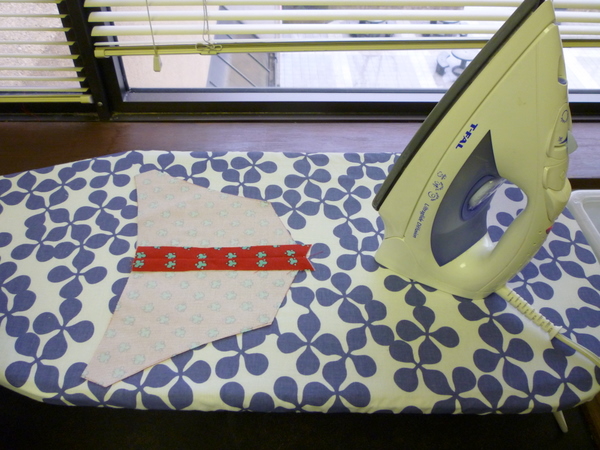 For sewing the curved seams, pin the pieces together matching the ends first. (Just like we did in the muslin!)
For sewing the curved seams, pin the pieces together matching the ends first. (Just like we did in the muslin!)
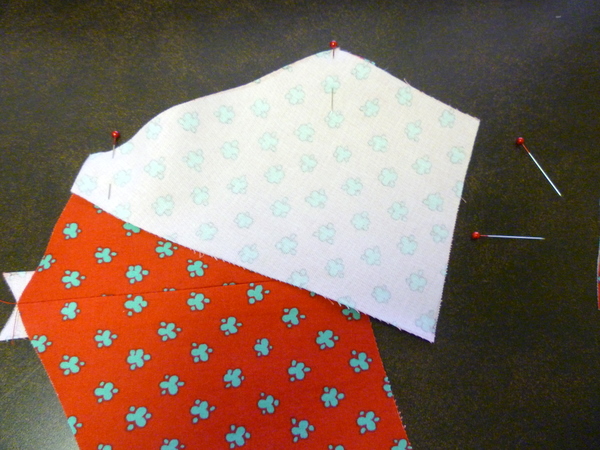 Then, pin in between the edges as shown.
Then, pin in between the edges as shown.
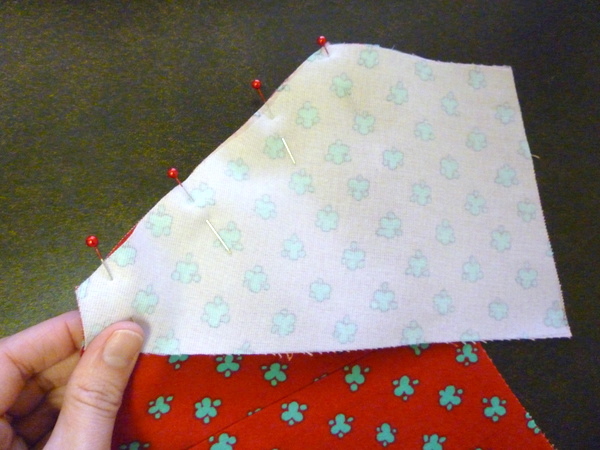 It’s really important that you sew these seams accurately! If you take more in, or less than the seam allowance, it will change how the waistband fits.
It’s really important that you sew these seams accurately! If you take more in, or less than the seam allowance, it will change how the waistband fits.
Even if you’re taking an extra 1/8″ (3mm) on each seam, there are 7 seams, so that could equal almost an inch of difference! Take your time, sew slowly, and sew your seamlines exactly.
Press all seams open.
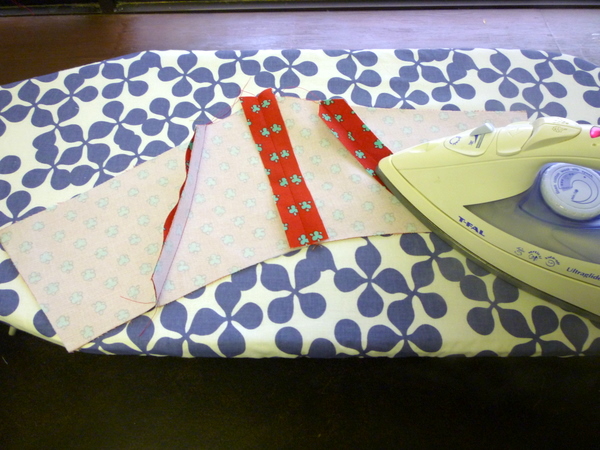 If you’re going to topstitch the seams or add trim – wait to trim the seam allowances until the trim or stitching is done. (I found it easier to trim evenly after the topstitching/trim was added.)
If you’re going to topstitch the seams or add trim – wait to trim the seam allowances until the trim or stitching is done. (I found it easier to trim evenly after the topstitching/trim was added.)
If you’re leaving the waistband as-is, then trim the seam allowances. I trim them in half, as it’s easy to eyeball the distance that way. You may need to clip the seam allowances too, to get them to lie flat.
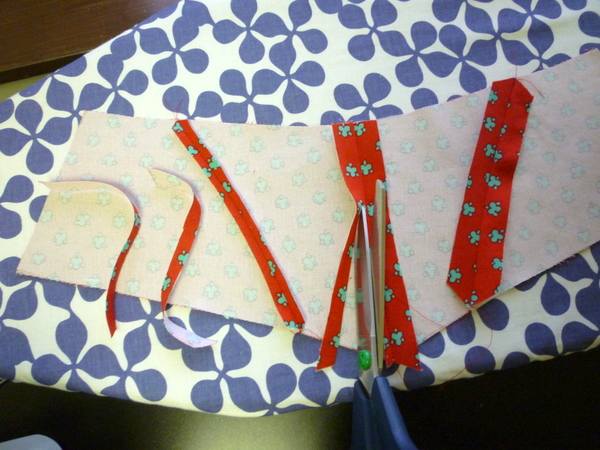 At the end, you should have a constructed waistband looking somewhat like this:
At the end, you should have a constructed waistband looking somewhat like this:
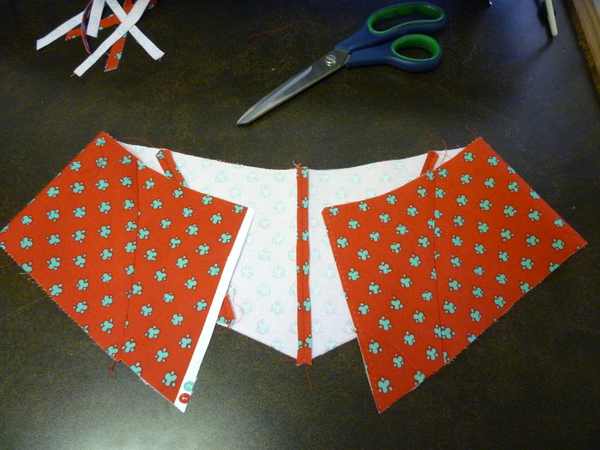 Let’s move on to the waistband facing!
Let’s move on to the waistband facing!
Sewing the Waistband Facing
Only two seams to sew here! Sew the Front Waistband Facing to the Back at the sideseams.
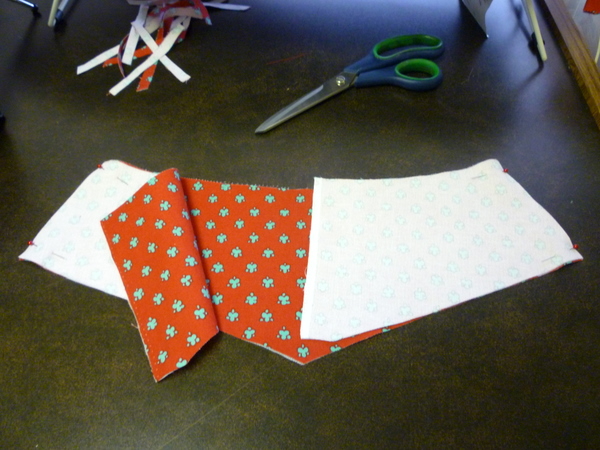 Press both seams open,
Press both seams open,
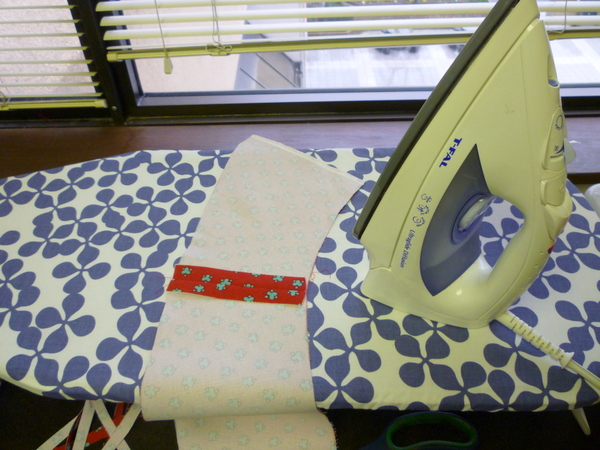 and trim the seam allowances.
and trim the seam allowances.
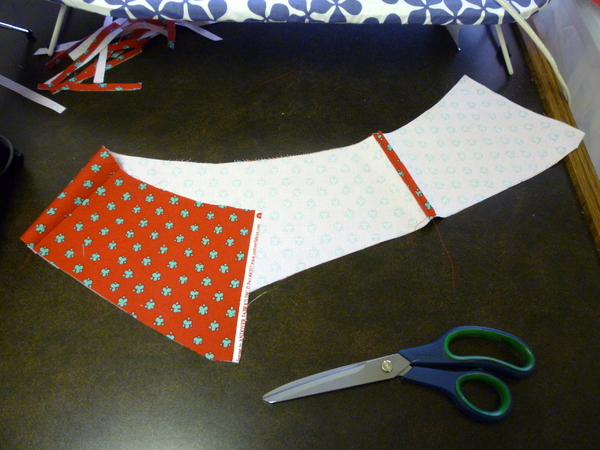 You should have two pieces for the waistband now: one with the curved seams that goes on the outside, one without the curved seams that will go on the inside.
You should have two pieces for the waistband now: one with the curved seams that goes on the outside, one without the curved seams that will go on the inside.
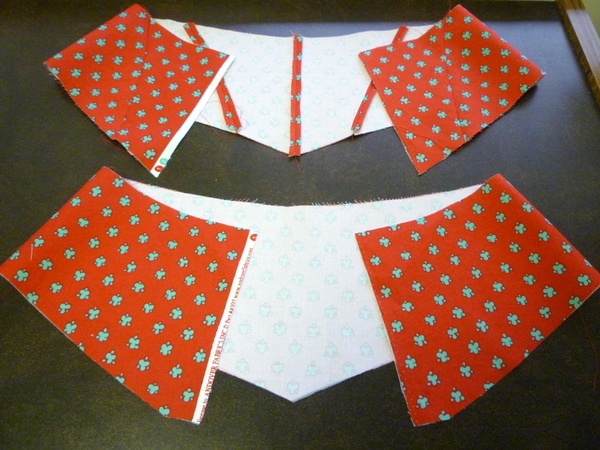 One new step that we didn’t do on our muslins: finish the lower edge of the facing. If you have a serger, that’s a quick and easy way to finish the lower edge!
One new step that we didn’t do on our muslins: finish the lower edge of the facing. If you have a serger, that’s a quick and easy way to finish the lower edge!
If you don’t have a serger, here are some options for finishing the edges:
- Pink the edges with pinking shears
- Zigzag the edges
- Turn and stitch the edges
- Bind the edges – you can use bias tape, seam binding, anything that will bend around the curved edges. (Grosgrain and other ribbons might not be as flexible around the curves, so they wouldn’t be a good choice.)
I wanted to bind my edges, but I only had enough seam binding to bind the hem, and I’d rather use it there! So I’m going to turn-and-stitch the edges on my skirt.
To finish the edges by turning and stitching:
Press under 1/4″ (6mm) on the raw edges – in this case, our lower edge.
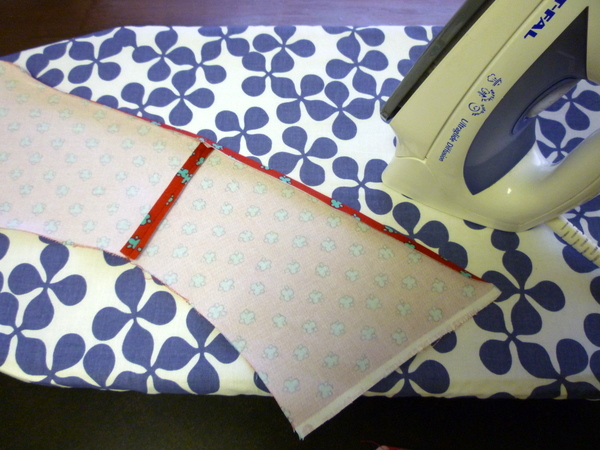 At the point, press under one side, then the other to form a point.
At the point, press under one side, then the other to form a point.
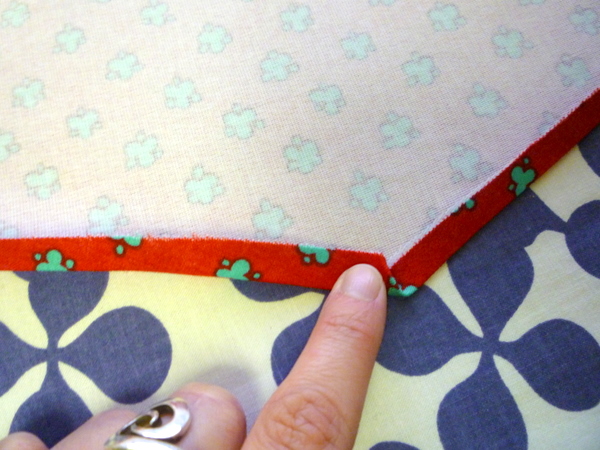 Edgestitch close to the fold from start to finish, about 1/8″ (3mm) from the fold.
Edgestitch close to the fold from start to finish, about 1/8″ (3mm) from the fold.
 This is one of those rarely-used edge finishes but it looks pretty tidy if you don’t have a serger! (And maybe even if you do. Sometimes it’s nice to use your sewing machine instead of a serger so the thread matches perfectly.)
This is one of those rarely-used edge finishes but it looks pretty tidy if you don’t have a serger! (And maybe even if you do. Sometimes it’s nice to use your sewing machine instead of a serger so the thread matches perfectly.)
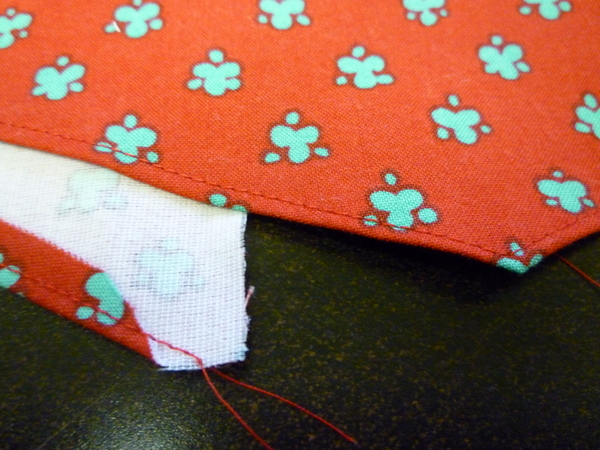
And that’s it for today!

This is how I had finished my first waistband facing (before it turned out too small, luckily it’s the waistband that fits and only the facing to redo). Looks like it doesn’t fray because of the interfacing, right?
And my apologies… I didn’t mean to rush you. It’s just that everything is so clear once you post the steps on your blog while I stared for hours at the instructions for the zipper and didn’t get it. But I am unexperienced and also really bad at imagining anything in 3D.
Have you thought about a “donate button” or something like that. I would gladly send you something in return for the sewing lessons. Paying just the price of the pattern for all this almost feels like cheating.
I can’t tell from the photos – did you edge stitch the center back facing edge where the zipper goes or just along the facing bottom edge? The “point” you refer to looks like the center front point, but in another photo it looks like the center back zipper edge is pressed also. So, I wasn’t sure if that got edge stitched too. Thanks!
When finishing the edges with a serger, do you let the serger trim off any? If so, how much?
One point you mentioned that bears repeating, watch your seam allowances. The quickest way to make an ill fitting garment is to not mark and/or accurately stitch your seams. The pattern markings clearly show what the seam allowance should be on most patterns. Great demonstration Tasia.
@julia: Hi Julia! No worries, no need to apologize! I like to stick by my original schedule wherever possible, so you guys know what to expect. It is SO much easier to see the sewing steps in 3D! I can only cram so much info into the instruction sheets, so I like that I can show you twenty photos for one sewing step if it helps, on here. I love doing these sew-alongs, no need to send me anything! If people end the sew-along feeling like they learned something, and feeling more energized and inspired to sew, then I’m a happy camper! :)
@Lauren R: Hi Lauren! I only finished the lower edge of the facing, not the centre back seams. Just the bottom edge needs to be finished! You’re right, I’m referring to the centre front point.
@Catholic Bibliophagist: Good question! I let the serger trim off about 1/4″ – the same amount that I turned it under to finish the edges. Whenever I’m serging I tend to let it trim the minimum it needs to, so the stitching doesn’t look ‘loopy’ and float over empty space. If that makes sense! A quarter inch (6mm) is the maximum, and just shaving a hair off the raw edge is the minimum. Aim to keep it evenly trimmed for best results!
Short answer = 1/4″ off of the raw edges. Hope this helps!
@Corinne: Thank you! You’re absolutely right, it’s important to sew all of your seams evenly, but especially these ones, as there are so many all around the waistline! I know in my earlier sewing projects, I considered the seam allowance a ‘suggestion’ only, and ended up with all kinds of fitting troubles! Cutting accurately and sewing accurately makes a huge difference. :)